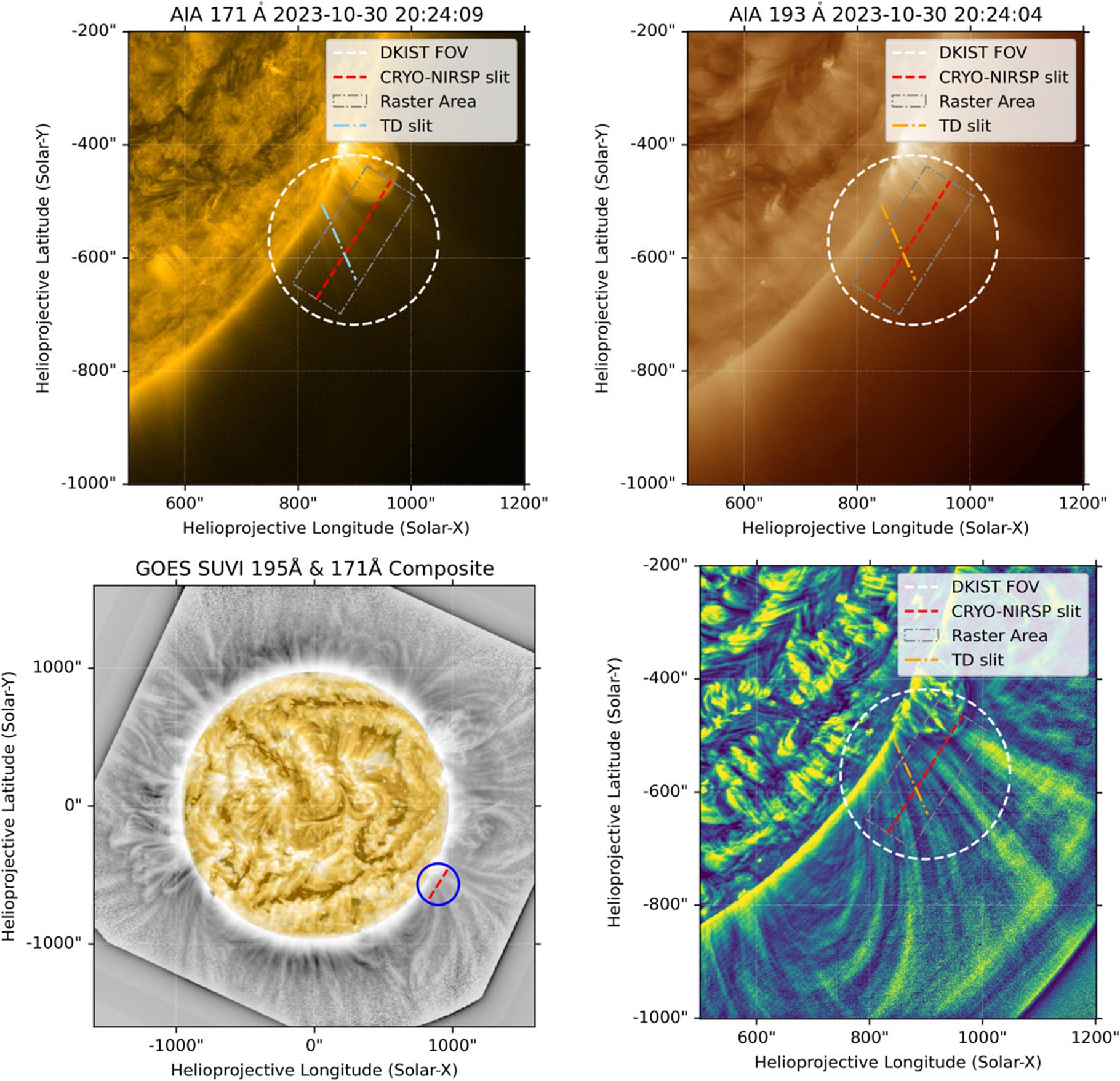NSF’s Inouye Solar Telescope’s Cryo-NIRSP instrument offers unprecedented look at Alfvén waves

Over the last decade, scientists have confirmed the presence of a an important type of magnetized waves called Alfvén waves in the Sun’s outer atmosphere – i.e., the corona. These waves, specific to plasma environments like those in the Sun, can transport energy from the lower atmosphere into the hot corona and solar wind.
Recently, the Cryo-NIRSP instrument at the National Science Foundation (NSF) Daniel K. Inouye Solar Telescope, built and operated by the NSF National Solar Observatory (NSO), has changed our ability to study them, and has started collecting sharper and faster data than ever before – the Inouye’s data is 9 times clearer, 30 times faster, and less noisy than previous observations.
Using these unprecedented data, researchers from Northumbria University, Southwest Research Institute, NSF High Altitude Observatory, CU Boulder, and NSO have closely examined these waves. Their results not only confirm what we already knew about them, but also show that higher-frequency waves (faster oscillations) are also present – something advanced models suggest we should not really see because those waves were expected to get absorbed before reaching the corona.
Interestingly, although these high-frequency waves exist, they likely carry less energy than the lower-frequency ones. The study also confirms that these waves do not compress the material they move through, which is another important property of Alfvén waves.
The unique capabilities of Cryo-NIRSP and the Inouye are affording the solar physics community to investigate our home star like never before, and furthering our understanding of solar physics as well as fundamental plasma interactions.
